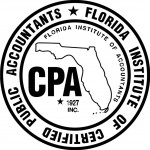According to the IRS, cost segregation studies vary widely in terms of consistency. This lack of consistency, coupled with the complexity of the law in this area, often results in an IRS examination that is controversial and burdensome for all parties. Lanter, Leonardo & Levy’s team of specialists provides the expertise, industry experience and specialized training required to conduct your cost segregation study to the satisfaction of all interested parties.
The goal of a cost segregation study is to determine the proper classification and correct costs of property and all project-related costs for the purpose of segregating those costs to reap significant tax savings. Those saving are derived from utilizing shorter recovery periods and accelerated depreciation methods for computing depreciation deductions.
The good news is, owners of commercial real estate can capture depreciation deductions that were not taken in previous years without the need of amending tax returns for the company or shareholders previously filed tax returns. Cost segregation studies can be prepared for new buildings under construction, existing buildings undergoing renovation or expansion, apartment complexes, hotels/motels, manufacturing plants, office buildings, shopping malls, and a variety of the other structures.
Lanter, Leonardo & Levy follows closely the guidelines promulgated by the IRS in conducting cost segregation studies. Coupled with our thorough understanding of tax law, our methodology, documentation, depth, format, and expertise permits us to perform and complete your cost segregation study for maximum tax benefit.
The Cost Segregation Process Includes the Following Steps:
1. Review of Cost Detail
This review includes, but is not limited to, the general contractor’s application for payment, construction invoices, change orders, depreciation schedules, and appraisals, if these documents are available.
2. Inspection of Facility
We will inspect the facility in order to gain a full understanding of its use and condition, and to gather information that further supports the classification of capitalized costs into their appropriate class lives.
3. Photograph & Document
Photographs are taken of qualifying construction components and are included in our report.
4. Review of Blueprints
All available blueprints are reviewed, and the performance of quantity take-offs and cost estimates is evaluated for personal property not segregated in other cost information.
5. Cost Reconciliation
A reconciliation of all construction costs and estimates of the actual amounts incurred by tax life is conducted. This step includes adjusting estimates to account for location, time, and physical condition. We also perform an allocation of soft costs to any direct cost in each category to maximize your total benefits.
6. Preparation of a Report
This report complies with the IRS standards stipulated in the Audit Techniques Guide for Cost Segregation Studies. We utilize architects and CPAs who thoroughly evaluate and identify areas of tax savings for our clients.
In addition to cost segregation studies, we also perform Fixed Asset Studies. Similar to a Cost Segregation Study, a Fixed Asset Study evaluates a company’s assets and assigns misclassified fixed assets to appropriate tax lives. While a Cost Segregation Study focuses on buildings, a Fixed Asset Study encompasses all fixed assets a company owns. This results in immediate and substantial cash flow by accelerating deductions on assets that were previously placed in service with improper tax lives.
The best strategies for business and personal growth and success are specific to your business and personal situation. Your plan must be tailored to fit your unique circumstances. Contact Lanter, Leonardo & Levy for a no obligation consultation on building and preserving the company and wealth you have worked so hard to achieve.
Call Alex Leonardo or Rick Captain today at 561-998-7770


